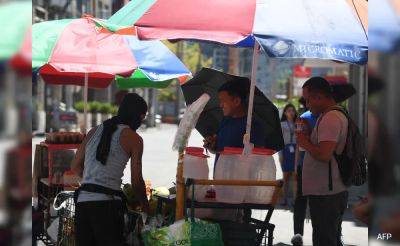Recto assures public of gov’t intensified actions to further protect Filipinos’ purchasing power from the effects of El Niño and La Niña
Finance Secretary Ralph G. Recto has assured the public that the government is intensifying targeted actions to further protect the purchasing power of Filipinos from the effects of El Niño and La Niña on food and energy supplies.
“The Inter-Agency Committee on Inflation and Market Outlook is all hands on deck in monitoring weather-related disturbances as well as other external factors and their effects on the prices of essential goods to protect Filipinos’ purchasing power. Mitigating the effects of inflation, especially on our vulnerable sectors, is our top priority,” the Finance Chief said.
El Niño is characterized by abnormally dry and hot weather that brings drought or dry season, while La Niña is associated with above-normal rainfall that results in flooding.
These abnormal weather patterns, exacerbated by climate change, can adversely impact agricultural production and society as a whole.
Droughts during El Niño reduce crop yields and increase the cost of electricity while excessive rainfall brought about by La Niña can lead to the overflowing of dams and flooding that damage crops and infrastructure.
The Philippine Atmospheric, Geophysical, and Astronomical Services Administration (PAGASA) reported that the El Niño weather started in January and is expected to settle down between April and June 2024. Meanwhile, there is a 55% probability of La Niña emerging by June to August 2024.
Despite the ongoing onslaught of El Niño in March, the government managed to keep the inflation rate to 3.7%, within the target band of 2% to 4%, due to vigorous implementation of measures that ensured sufficient imports of key commodities and improved agricultural production.
The slight uptick in March was largely due to a higher rice inflation rate (24.4% in March from 23.7% in February) as El Niño affected rice-producing countries in Southeast Asia and export limits in India drove international rice prices higher.
Nevertheless, the food inflation rate was tempered by the slower price increases of eggs and other dairy products (2.3% from 3.5%), fruits (7.9% from 8.7%), bread and other cereals (4.6% from 5.1%), and ready-made food products (4.3% from 4.6%).
A decline in prices was







